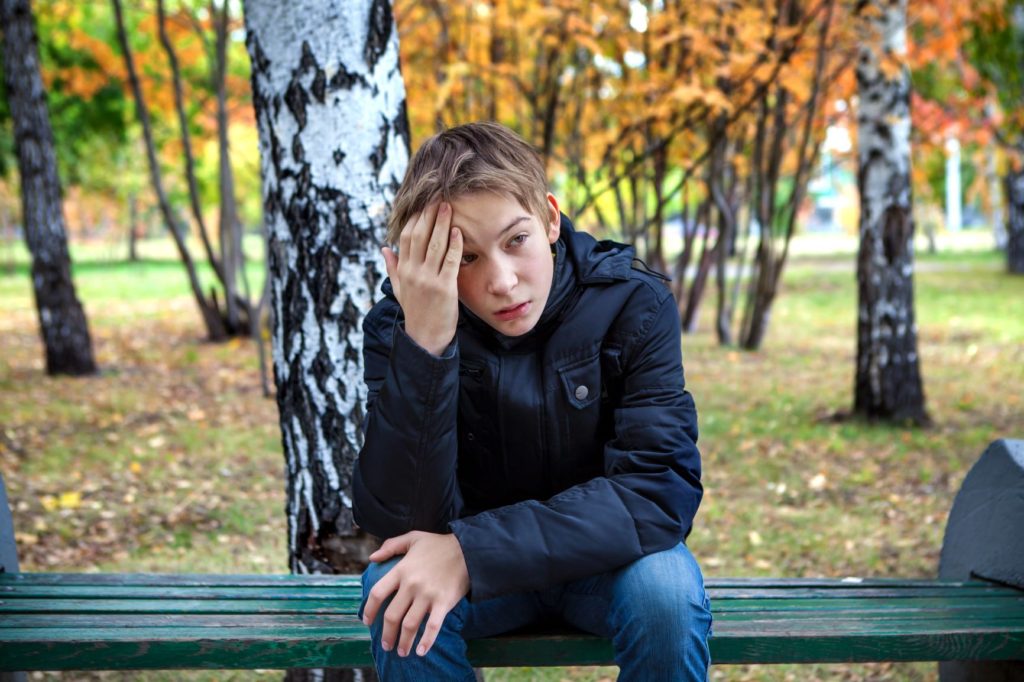Many kids will experience strong emotions of fear, sadness, worry, and loneliness from time to time. These strong emotions may appear at different times during their development as a result of both biological and environmental factors. Although these feelings are completely normal to experience throughout our lives, we also need to be aware whether these feelings are persistent, severe and affect a child’s daily functioning. In these cases, immediate action should be taken and unconditional love and support should be offered to your child.
Before you can intervene and support your child with anxiety and depression, you must first spot the symptoms. Fighting back against anxiety and depression starts with knowledge. You need to understand what these conditions are, how they manifest in your child, and what your child’s unique triggers are. It’s the frequency, severity, and duration of the symptoms of anxiety and depression that will help you determine whether it’s at an okay level or not.
It’s also important to remind yourself that child anxiety and depression are not your fault or the fault of your child. There are a number of factors that play a part in the occurrence of depressive symptoms.
- Genetics plays a role: if your family has a history of depression your child is at a higher risk.
- Environment plays a role: conflict with family or friends, familial instability, academic or athletic failure, loss of a loved one, bullying, poverty, and chronic illness are some examples of environmental factors that can trigger depressive symptoms.
https://new.bcparent.ca/2019/08/26/ten-tips-for-helping-you-and-your-child-with-back-to-school-anxiety/
Spotting the signs of anxiety.
A little anxiety is a good thing; it’s when anxiety becomes too big and interferes with your child’s everyday life that we need to make changes to better help your child cope with their anxiety. Here are some symptoms to look for:
- Intense fear of being away from parents.
- Extreme fear of a specific thing or situation (ex. dogs, insects, or needles).
- Fears of meeting or talking to people.
- Avoidance of social situations.
- Few friends outside the family.
- Refusing to go to school.
- Trouble sleeping at night.
- Worrying about things before they happen.
- Constant worries or concerns about family, school, friends, or activities.
- Repetitive, unwanted thoughts (obsessions) or actions (compulsions).
- Fear of embarrassment or making mistakes.
- Low self-esteem and lack of self-confidence.
- Persistent fatigue, headaches, and/or stomachaches.
- Having repeated episodes of sudden, unexpected, intense fear that come with symptoms like heart pounding, having trouble breathing, or feeling dizzy, shaky, or sweaty.
Here are some questions to ask yourself whether your child is experiencing a healthy amount of anxiety or if it is an issue that must be addressed:
- Would you have felt anxious in the same situation?
- Is this anxiety proportionate to the situation?
- Is your child being held back by this anxiety?
- Does this anxiety feel temporary or does it feel like it is going to stay for a while?
Spotting the signs of depression.
When we think about childhood depression we need to think about it on a spectrum. From time to time, kids will be sad, just like adults, but it won’t be serious and long-lasting. To understand if a child is suffering from depression we need to consider the frequency, severity, and duration of the symptoms.
Here are some things you should ask yourself as a parent:
- Are the episodes increasing in frequency?
- Are they lasting longer than usual?
- Are they more intense than they were, or disproportionate to reactions of other children?
With children, we look for behavioural symptoms, because we don’t expect children will be able to vocalize and articulate what they are feeling. Here are some symptoms to look for:
- Tearful
- Withdrawn
- Showing changes in eating patterns – eating a lot more or a lot less than usual
- Showing changes in sleep patterns – sleeping a lot more or a lot less than normal
- Having a hard time paying attention
- Feeling worthless, useless, or guilty
- Irritable
- Lack of energy or enthusiasm
- Making “all or nothing” statements: e.g., “everyone hates me”, “nothing is right or goes my way” or “I always mess up”
- Disinterest in things that used to bring them joy
- Being tired and sluggish or tense and restless a lot of the time
- Showing self-injury and self-destructive behavior
- Failure to thrive (usually in more extreme cases) – children who have stopped growing and learning and in some cases they can start to regress – e.g., bed-wetting, losing learned skills, or falling behind in school
Supporting your child through their anxiety and depression.
Once symptoms have been spotted, it is important to support your child in managing and understanding their emotions, thoughts, and feelings. It’s essential that your child does not feel shame about their emotions and internalize this shame. A way to help your child not only fight against their anxiety but also push back against stigma and shame is to use the “name it to tame it” strategy.
The “name it to tame it” strategy is a way for your child to learn how to separate the anxiety and depression from their self. We don’t want children to see anxiety and depression as a part of them, like a part of their personality that they are unable to change. We want kids to project the anxiety and depression outside of themselves so that both of you can see it, work with it, and fight back against it.
To help teach your child how to verbalize their thoughts and feelings, here are some questions to ask them about their anxiety or depression:
- What does the anxiety or depression look like and feel like?
- If you had to give it a name what name would you give it? Like a storm, cloud or monster? (This is a great way for kids to label their anxiety and depression and process it in a more concrete way that makes sense for their developmental level).
Another great strategy for keeping track of your child’s mental health is by journaling. It can be very helpful to track the frequency, severity, and duration of your child’s behaviours and symptoms. It also is helpful to have this as a way to remember what information to relay to child’s health practitioners.
There is always hope.
Childhood anxiety or depression is not a hopeless condition, children’s brains are still wiring themselves as they grow and develop. This means is that there are many opportunities to help your child better adapt to stressors and help improve their patterns of behaviour and ways of thinking.
The most important thing you can do as a parent is to be present and let your child know that you love and support them no matter what. This is essential to fighting back against mental health challenges throughout one’s entire life.
Dr. Jillian Roberts, a renowned child psychologist, author, professor and mother. She is the co-founder of FamilySparks, an award-winning company that offers families a supportive, resource-rich community to help them navigate our increasingly complicated world. Dr. Roberts has recently launched her new book, “Kids, Sex & Screens.”










